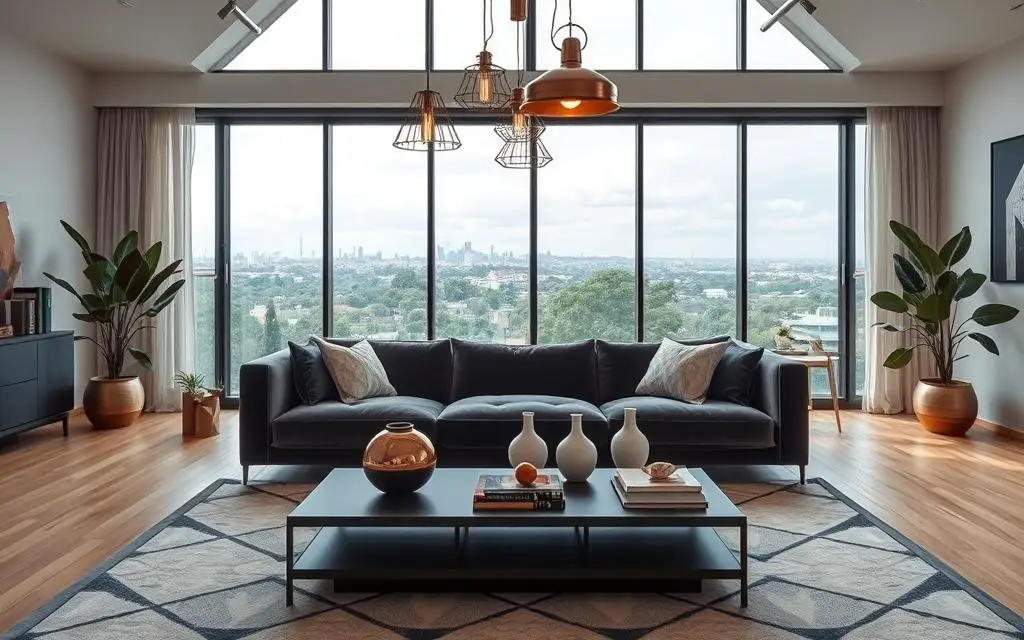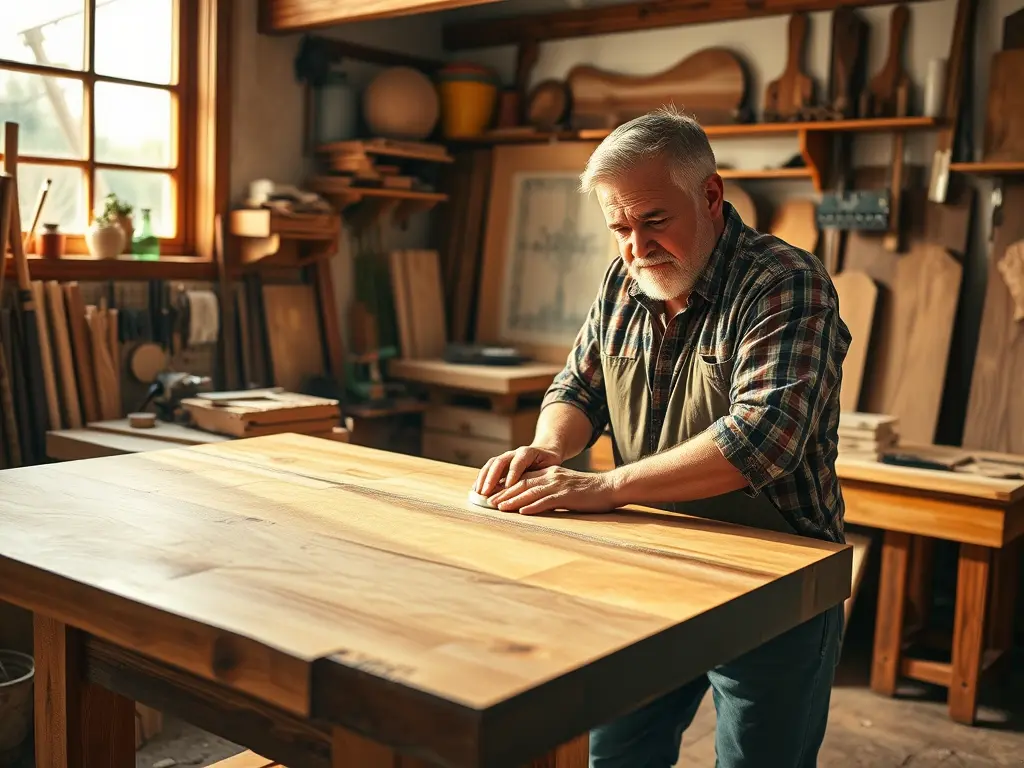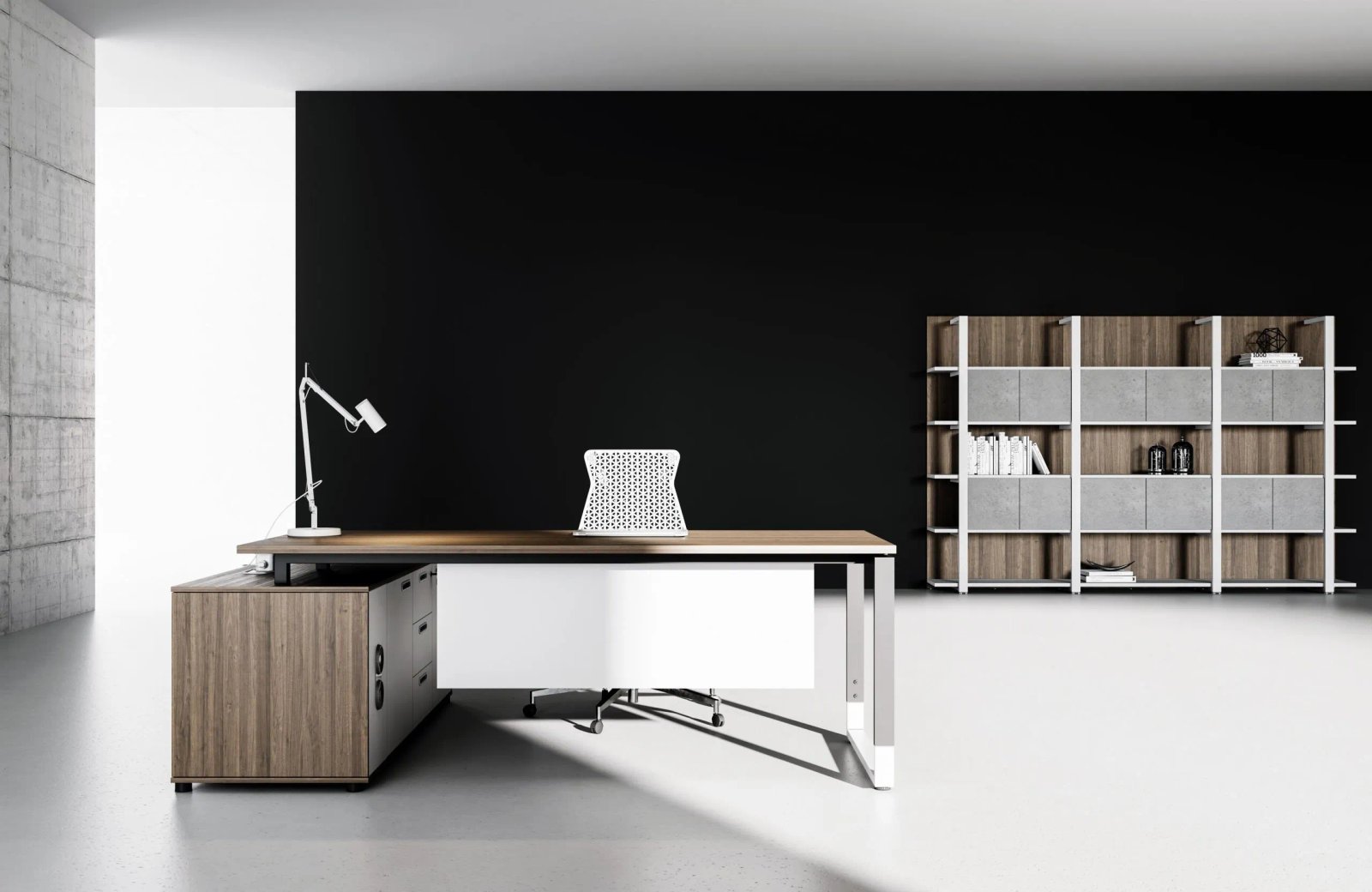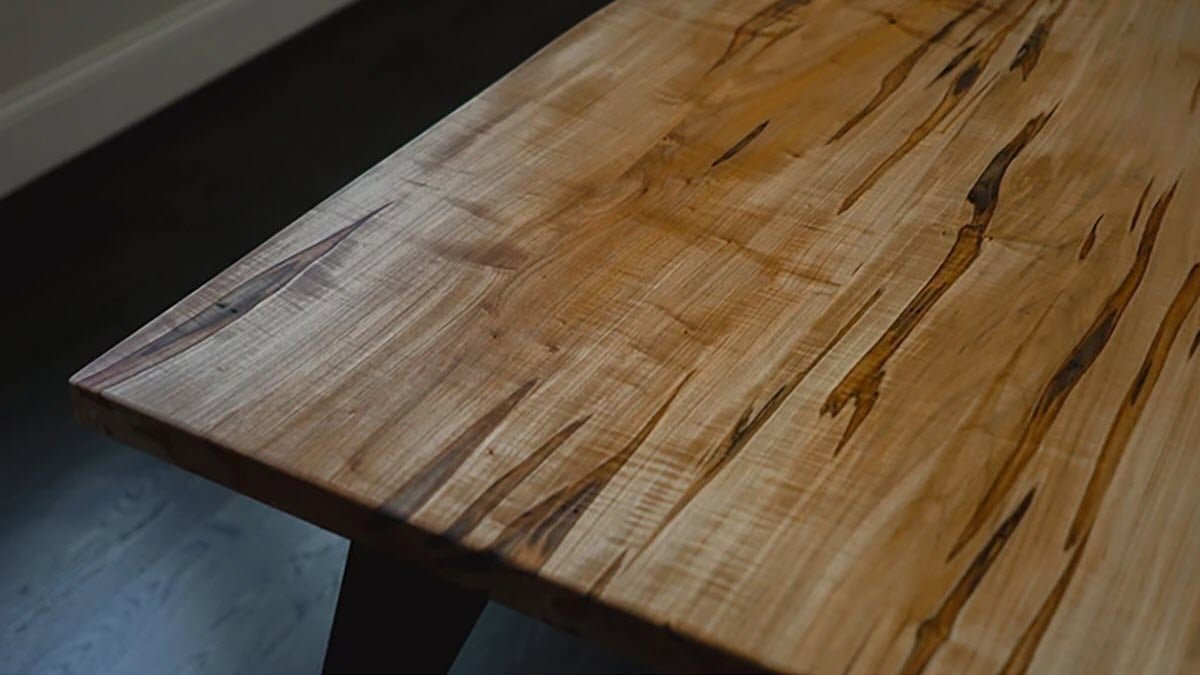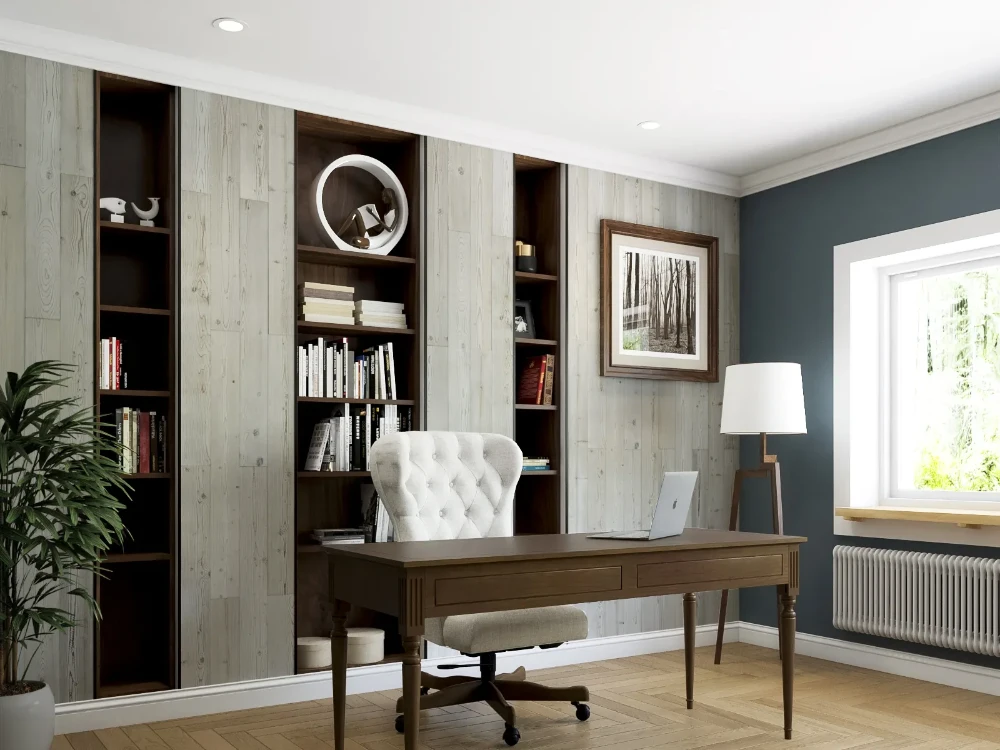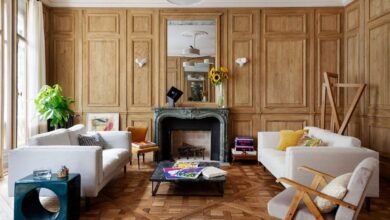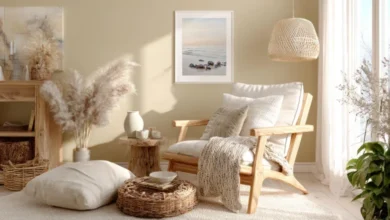16 Furniture Trends 2026: Your Complete Guide to Next Year’s Hottest Designs
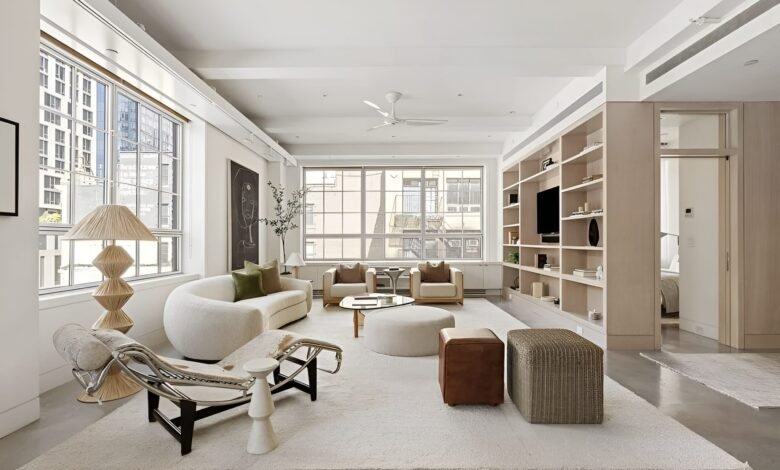
Discover the 16 Furniture Trends 2026 that will define from bold sculptural silhouettes to sustainable materials that blend style with conscience
What will our homes look like in 2026? If current design trajectories tell us anything, next year promises a fascinating blend of artistry, sustainability, and personality-driven design. We’re moving away from cookie-cutter interiors toward spaces that tell stories and reflect individual values.
Whether you’re planning a complete home makeover or just want to refresh a single room, these 16 furniture trends will help you create a space that feels both current and timeless. Let’s explore what designers and homeowners are falling in love with for 2026.
1. Artistry & Craftsmanship: The Return of the Human Touch

There’s something magical about furniture that shows evidence of human hands. In 2026, we’re seeing a beautiful revival of traditional craftsmanship, where imperfections aren’t flaws—they’re features.
Woodworkers are leaving chisel marks visible on carved surfaces. Upholsterers are displaying hand-stitched seams instead of hiding them. Traditional joinery techniques like dovetails and mortise connections are becoming visual centerpieces rather than hidden structural elements.
This movement reflects a broader cultural shift. After years of mass-produced uniformity, people are craving objects with soul—pieces that carry the unique signature of their maker’s skill and care.
2. Oversized & Voluptuous: Go Big or Go Home
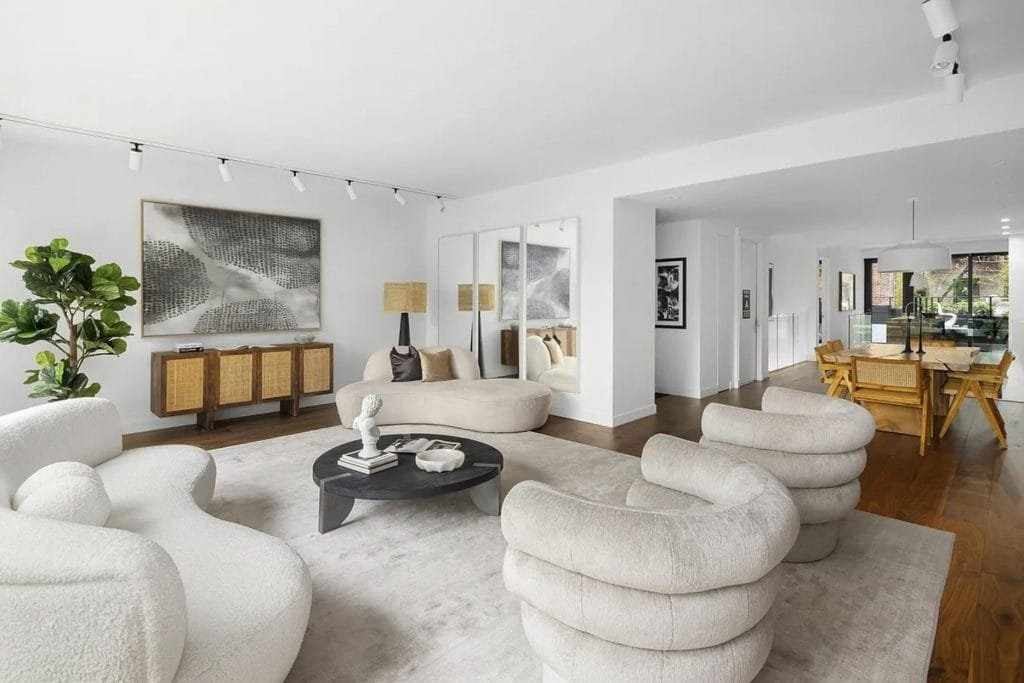
Forget dainty furniture that hugs the walls. In 2026, we’re embracing pieces with presence—sofas that command entire rooms, chairs with backs that reach toward the ceiling, and cushions that invite you to sink in and never leave.
This trend isn’t just about comfort (though that’s certainly part of it). These monumental pieces blur the line between furniture and sculpture, turning functional items into room-defining art installations. As our homes become multipurpose spaces for work, relaxation, and entertainment, we need furniture substantial enough to anchor different activities within the same room.
3. Data-Driven Comfort Design: Science Meets Seating
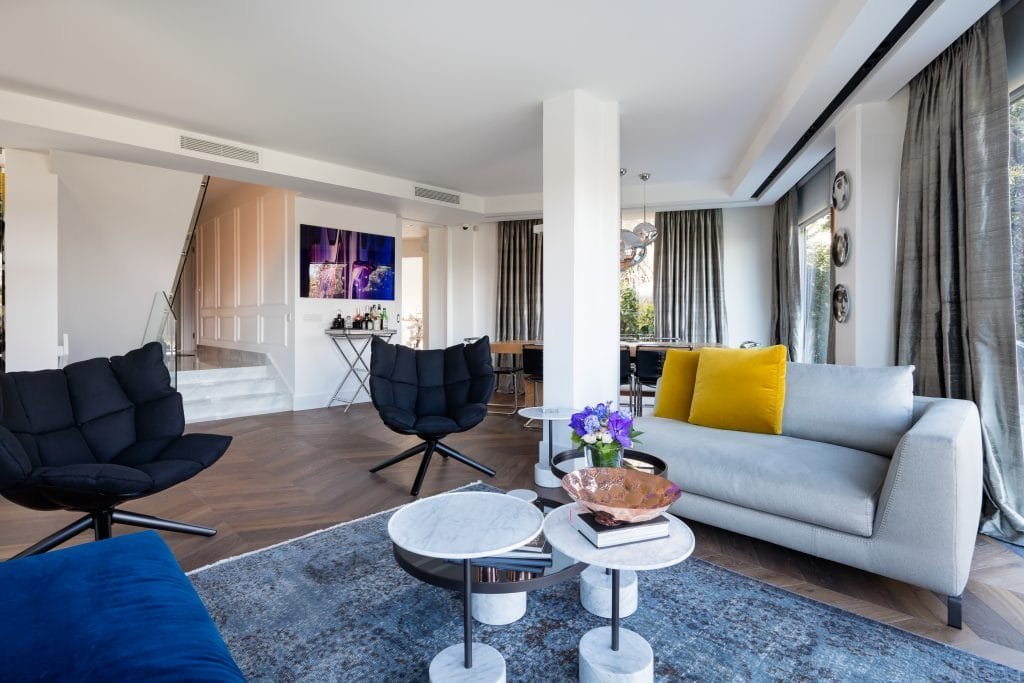
Your furniture might soon know more about your posture than you do. Technology is revolutionizing how we think about comfort, with algorithms analyzing body positions, pressure points, and sitting habits to create chairs and sofas that truly support how we live.
Some advanced models now feature embedded sensors that track weight distribution and provide feedback to manufacturers, who continuously refine designs based on real-world usage. It’s furniture that learns and evolves—pretty incredible when you think about it.
4. Woven Brass Textures: Metal Meets Textile
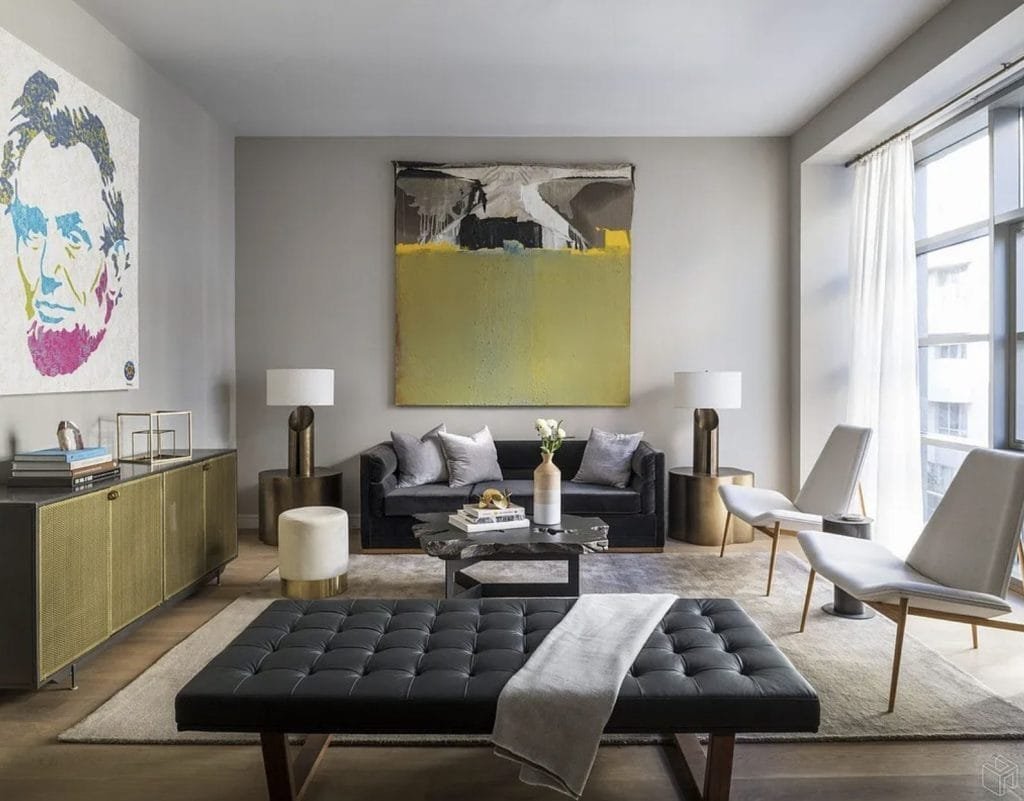
Brass is getting a makeover in 2026, and it’s stunning. Designers are transforming this traditional metal into textile-like patterns through precision metalworking. Think basket weave configurations across cabinet doors, mesh-like perforations that resemble chain mail, and surfaces that catch light differently from every angle.
These woven brass surfaces create depth and visual interest that changes as you move around a piece—making each viewing angle a discovery.
5. Whimsical Furniture Design: Serious Spaces Get Playful
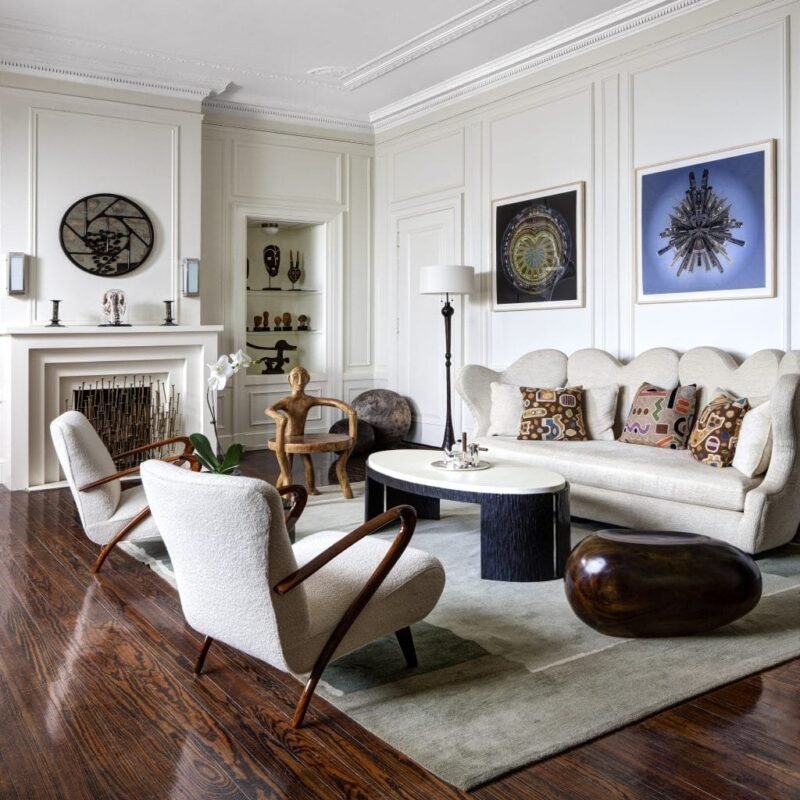
Who says grown-up homes can’t have a sense of humor? In 2026, playful furniture is breaking free from nurseries and children’s rooms to bring unexpected joy into sophisticated living spaces.
We’re seeing poufs shaped like oversized animals, sofas inspired by giant mushrooms, and tables with delightfully unconventional forms. These pieces spark conversation, lighten the mood, and remind us that our homes should bring us happiness—not just function efficiently.
Pro Tip: Not sure which 2026 furniture trends match your personal style? Consider taking an interior design style quiz to discover what resonates with you. Understanding your preferences will help you choose trends that you’ll love for years to come, not just for a season.
6. Biomorphic Shapes in Motion: Nature’s Influence

Furniture is taking inspiration from the natural world in increasingly sophisticated ways. Biomorphic design goes beyond adding a leaf motif—it’s about adopting the fluid geometries and structural logic of living systems.
Table legs split like tree trunks. Chair backs curve like wind-bent grass. Leather surfaces are textured to resemble feathers. These pieces bring the organic rhythms of nature indoors, creating spaces that feel alive and connected to the world outside our walls.
7. Cubism in Furniture: Fractured Forms
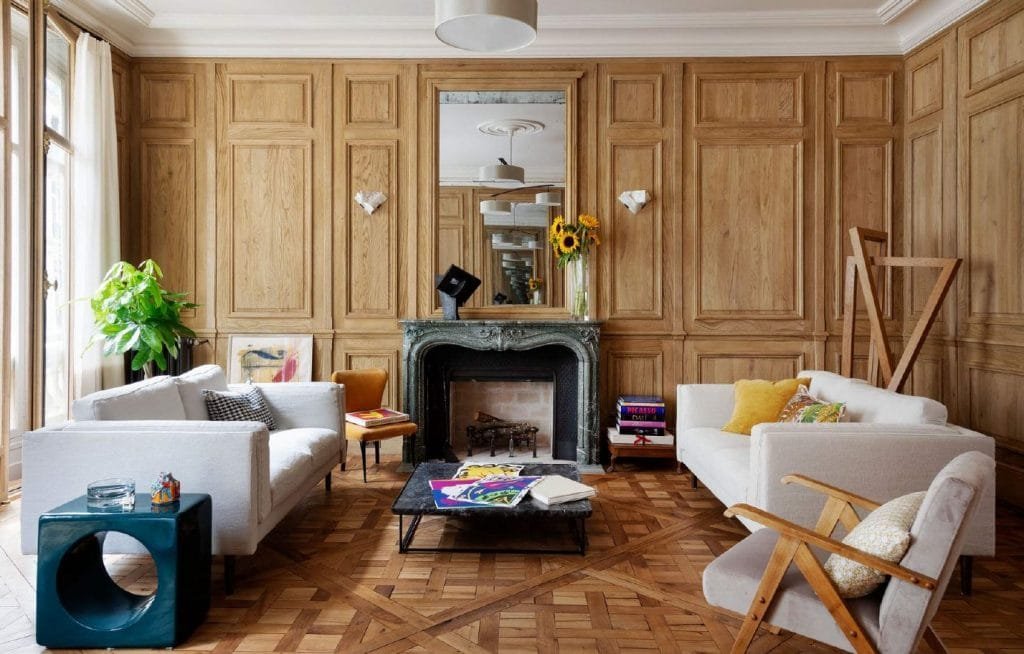
Not everything in 2026 is about curves and organic shapes. There’s an equally strong movement toward angular, fragmented forms inspired by Cubist art. Cabinet faces split into asymmetrical sections, tabletops fragment into multiple levels, and chair backs angle in unexpected directions.
These pieces challenge our expectations of symmetry and balance, creating visual interest through geometric complexity rather than smooth, flowing lines.
8. Colorful Glass Tables: Transparency Meets Drama
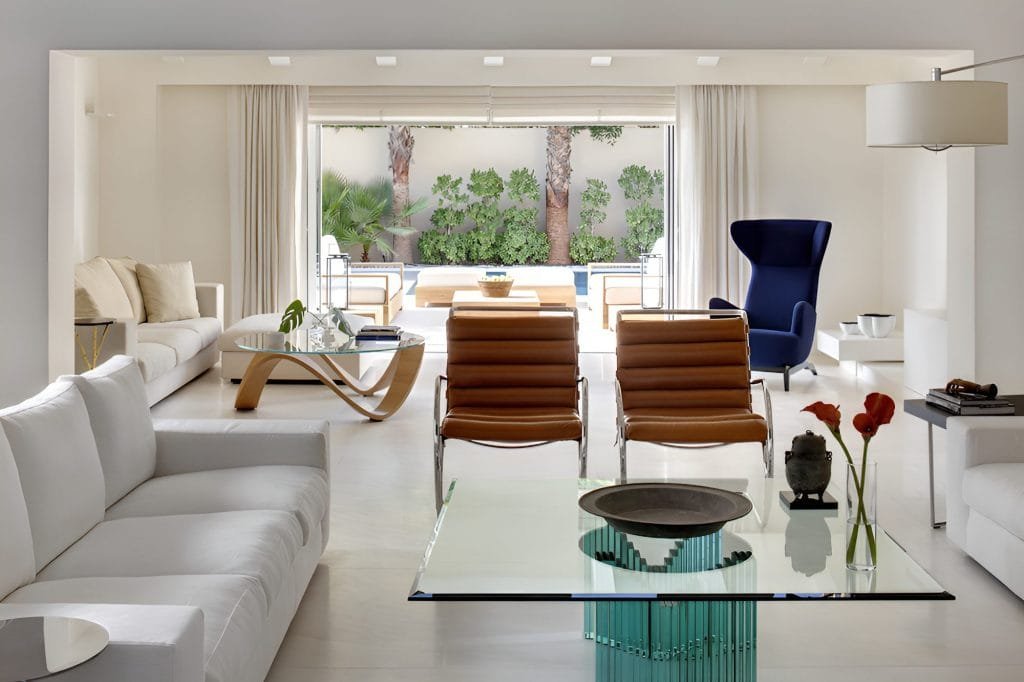
Glass furniture is shedding its neutral reputation. In 2026, we’re seeing saturated colors that command attention—emerald greens that catch light like cut gems, rich amber tones, and deep cobalt blues that rival artwork in their visual impact.
These colored glass pieces often pair with contrasting materials like pale limestone or polished bronze, creating striking focal points that change character throughout the day as natural light shifts.
9. Quiet Luxury Crafted to Last: Investment Pieces
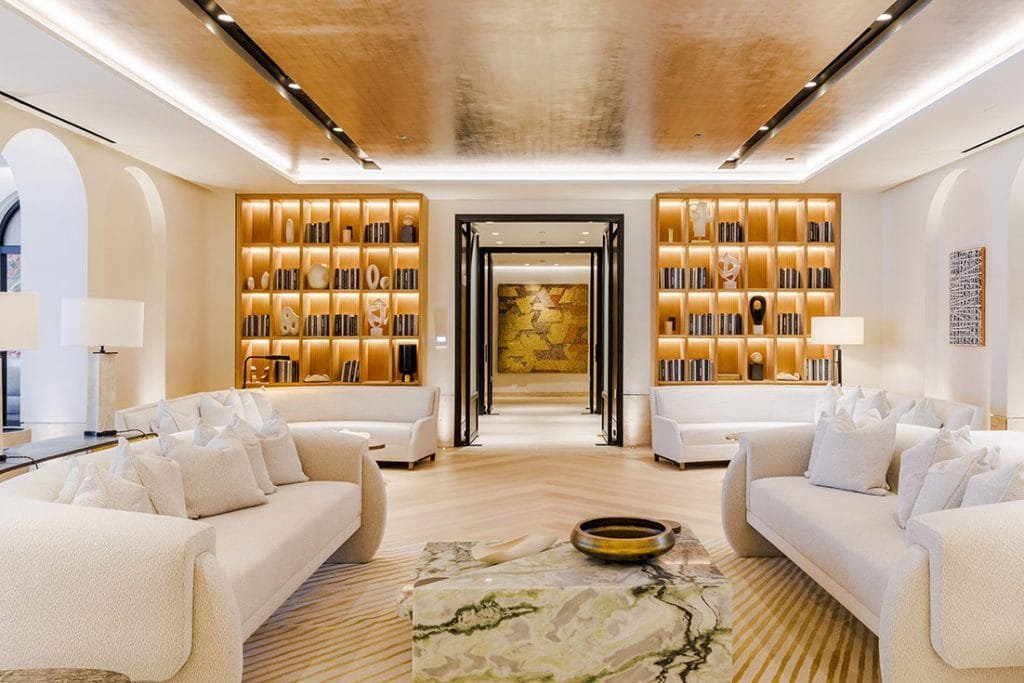
The “quiet luxury” movement is all about quality you can feel rather than logos you can see. As people grow weary of disposable furniture and rising material costs make quality more valuable, there’s a shift toward pieces built to last decades, not just years.
This means hand-stitched leather that develops beautiful character over time, solid wood that can be refinished multiple times, and hardware that functions smoothly after years of daily use. These are investments that bypass the replacement cycle entirely.
10. Embroidery Meets Wood: Traditional Techniques Reimagined
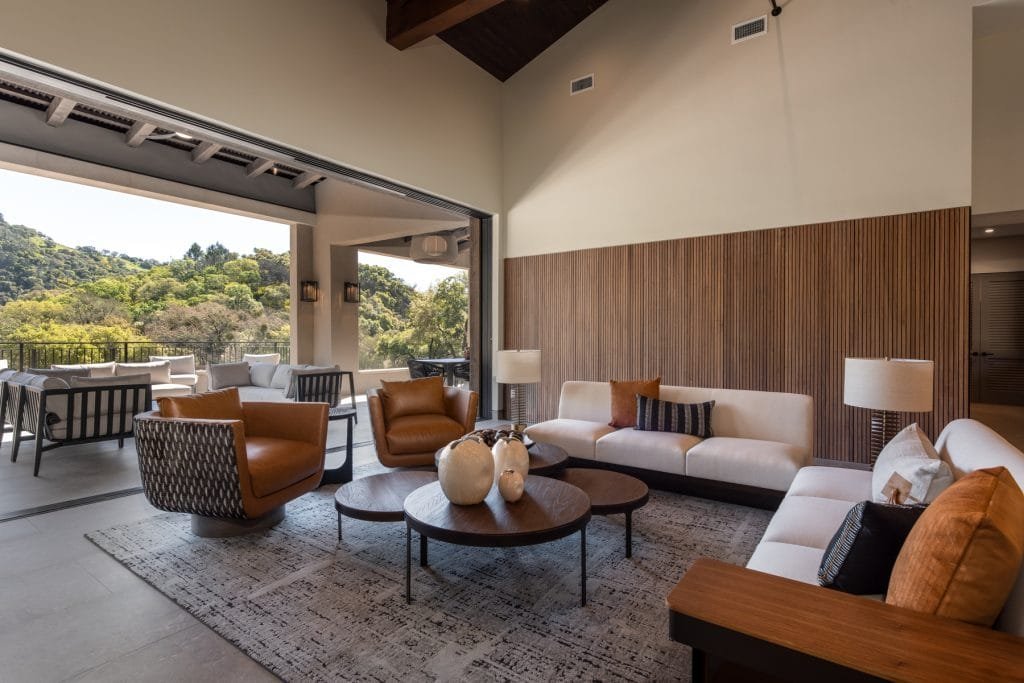
In a fascinating fusion of craft traditions, textile embroidery patterns are migrating onto wooden surfaces through precision carving and inlay work. Router bits trace the delicate paths of chain stitches and French knots, creating recessed channels filled with contrasting wood species.
The result? Cabinet doors and headboards that look like they’ve been embroidered with wood—a stunning marriage of two ancient crafts.
11. Faux Fur Upholstery: Bold Patterns Without Guilt

Faux fur is getting wild in 2026—literally. We’re moving beyond traditional white or animal prints into electric-blue zebra stripes and neon leopard patterns that make bold statements on ottomans and accent chairs.
The best part? Many of these materials are made from recycled plastic bottles, transforming waste into luxurious textures that rival natural fur in softness without the environmental or ethical concerns.
12. 60s & 70s Retro Chic: Mid-Century Reimagined
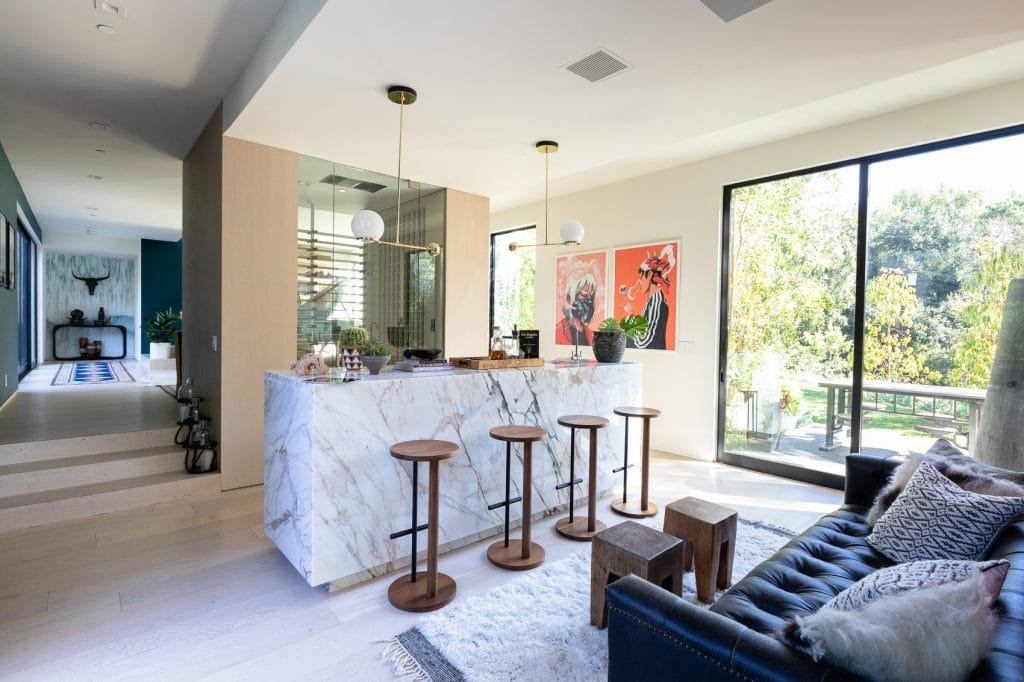
Mid-century modern never really left, but 2026 is bringing fresh energy to this enduring style. Think mod circular cutouts, glossy finishes in bold colors, and geometric shapes that celebrate the experimental spirit of the 1960s and 70s without feeling dated.
Classic pieces like the Eames lounge chair continue to top wish lists, while manufacturers revive iconic designs with contemporary materials and manufacturing techniques.
13. Functional Sculptural Pieces: Art You Can Use
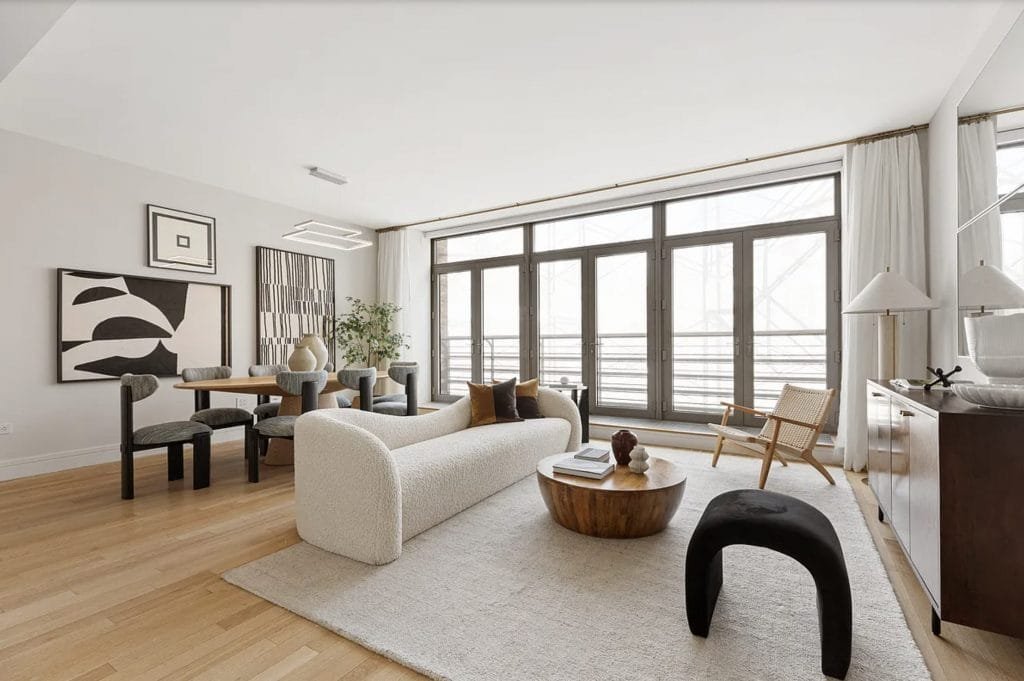
The line between furniture and fine art is blurring beautifully. Designers are creating pieces that function as seating, tables, or storage while simultaneously serving as room-defining sculptures.
These pieces use materials and techniques borrowed from contemporary art—carved stone, bent metal, innovative composites—resulting in furniture that commands attention even when it’s not being used. In smaller living spaces where every piece needs to justify its footprint, this dual functionality is particularly appealing.
14. Soft Geometry: Curves Take Over
Sharp corners and rigid angles are softening across all furniture categories. Traditional rectangles bulge slightly at their centers. Precise 90-degree angles become gentle curves. Even hard materials like wood and metal are shaped to eliminate harsh transitions.
This trend creates spaces that feel more human and inviting—less mechanical, more organic. It’s a subtle shift that makes a big difference in how comfortable a room feels.
15. Earthy Upholstery: Natural Color Palettes
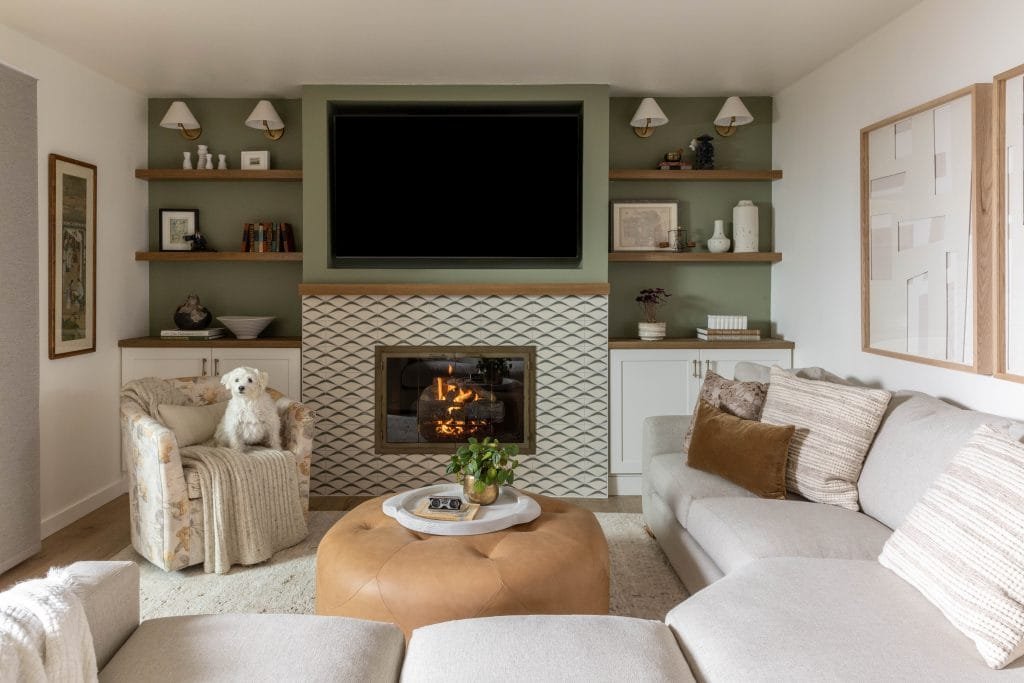
The color story for 2026 furniture is deeply rooted in nature. Rich chocolate browns, warm mochas, and creamy caramels are becoming the new neutrals. Forest greens and soft sages connect indoor spaces to landscapes, while deep berry and jewel tones add sophisticated drama.
This palette shift reflects our collective desire to bring the calming, grounding energy of nature into our homes—a key principle of biophilic design.
16. Design for Disassembly: Modular & Upgradeable
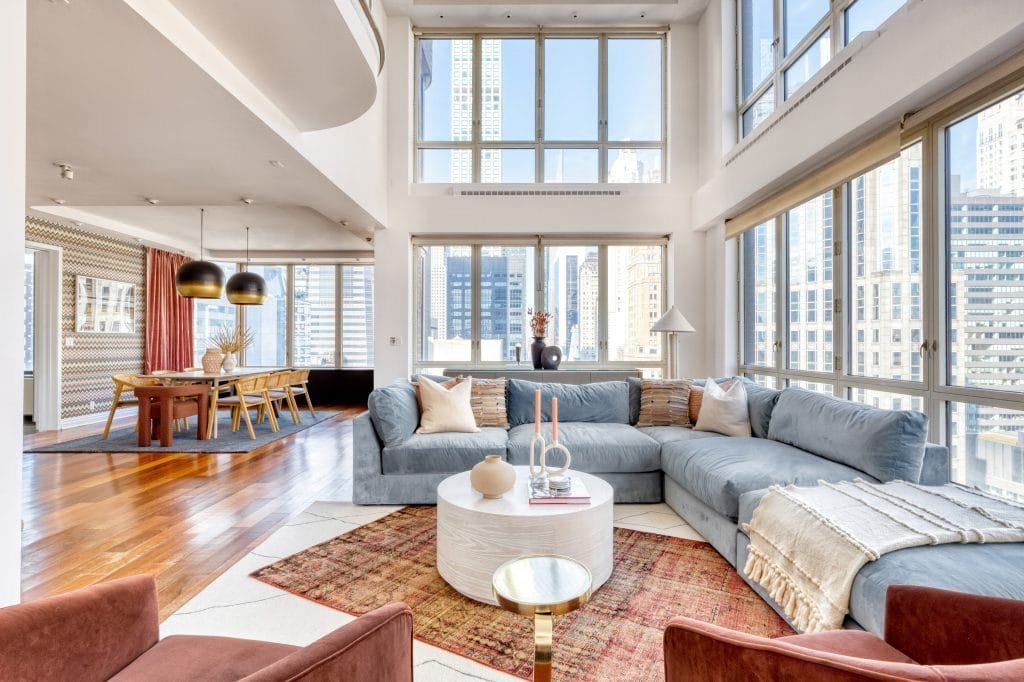
The final trend speaks to both environmental concerns and practical modern living: furniture designed to come apart and adapt. Modular sofas use mechanical fasteners instead of glue, allowing you to reconfigure arrangements or replace individual components as your needs change.
This approach extends furniture lifespan significantly while offering flexibility for people who move frequently or like to refresh their spaces. It’s a sustainable design that doesn’t sacrifice style.
Frequently Asked Questions About 16 Furniture Trends 2026
What’s the biggest furniture trend for 2026?
The shift toward artisanal craftsmanship and quiet luxury represents one of the most significant trends. People are moving away from mass-produced items toward pieces with visible evidence of human skill, quality materials, and construction designed to last decades rather than years.
Are mid-century modern pieces still trendy in 2026?
Absolutely! Mid-century design continues strong, but with a fresh twist. Look for updated interpretations that honor the era’s geometric shapes and playful spirit while incorporating modern materials and manufacturing techniques. Classic pieces like the Eames lounge chair remain perennially popular.
What colors are trending for furniture in 2026?
Earthy, nature-inspired tones dominate—think deep chocolate browns, rich mochas, forest greens, and soft sages. We’re also seeing bold jewel tones and saturated colors in materials like glass. The overall direction is away from cool grays toward warmer, more grounding hues.
Is sustainable furniture a trend or here to stay?
Sustainability has moved far beyond trend status—it’s becoming a fundamental expectation. Features like modular design for disassembly, materials from recycled sources, and construction that allows for repair and refinishing are increasingly standard. This shift reflects both environmental awareness and economic value.
How can I incorporate 2026 furniture trends on a budget?
Start small with accent pieces that embody trends you love—a sculptural side table, a colorful glass lamp, or a whimsical ottoman. Focus on versatile modular pieces that can adapt as your space evolves. Consider reupholstering existing furniture in trendy, earthy tones or faux fur rather than replacing entire pieces.
What furniture trends should I avoid in 2026?
While personal preference always matters most, designers are moving away from ultra-minimalist spaces with no personality, all-white or all-gray color schemes, and furniture that prioritizes Instagram aesthetics over actual comfort and function. The focus is shifting toward individuality and livability.
Helpful Resources for Furniture Shopping
- Apartment Therapy – Inspiration and practical advice for real homes
- Dezeen Design – Latest furniture and design news from around the world
- Architectural Digest – High-end furniture trends and designer insights
- Dwell – Modern design and furniture shopping guide
- Consumer Reports Furniture – Unbiased furniture reviews and buying guides





